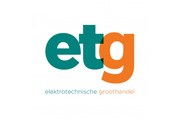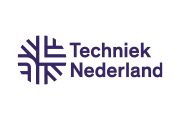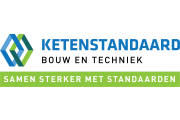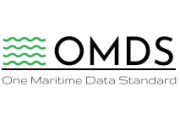The history of 2BA
Early in the 1990s, Uneto, which was the trade association for electrotechnical installation companies at the time, developed an information model for electrotechnical installers. The ETIM model, together with the GS1 standard (world wide identification and recording/barcodes), formed the basis for the development of a uniform database.
ETIM, the linchpin around which everything rotates
This central item file was intended to contain installation materials with distinctive features (often technical) and also the trade data linked to them. As was clear at the time, a single central product file is many times more efficient than if supplying and processing companies were to maintain their own item files themselves. The basis for such a central and uniform file became a well-thought-out classification structure. Which ultimately became the current ETIM model. A model which, by the way, is now accepted internationally by various sectors and areas of business, even across European borders. This has led to the original meaning of ETIM (Electrotechnical Information Model) being changed to ETIM Technical Information Model.

United we’re stronger!
Towards the end of the 1990s, the mechanical engineering installation sector also started classification of items on their own, under the supervision of their trade association at that time, VNI, through MECIM management foundation. There too, the starting points of the ETIM model were chosen. At a certain point (partly due to the merger of Uneto with VNI, now Techniek Nederland) both organisations coordinated their activities. The ‘E’ sector had already set up G@BI, an organisation which was already operating the item file. However, no exploitation model was present in the ‘M’ sector. On 28 February 2004, it was decided definitely that a new company, 2BA B.V., with exclusively industry partners as shareholders, would take on management and exploitation of the product file for the entire installation sector. After that, things moved rapidly for 2BA.The product and trade information from the 2BA Data Pool was quickly made accessible through the Internet too. This signalled the end of an era in which this information had been distributed among the subscribers by way of CD ROMs.
Advanced Unifeed search engine
In this way, grateful use was made of the increasing possibilities of the Internet. From then on, thanks to the development of the Unifeed search engine, the user was able to search for item information online, so in real time, in the 2BA Data Pool. One of the results of this was that this 2BA search engine, or the underlying web service, has now become an indispensable component in pretty much all ERP systems as used by installers on a daily basis.
Online Condition Server
Also making use of the possibilities offered by the Internet, the Online Condition Server (OCS) was launched. An extremely good online environment by 2BA, within which the individual price and discount rates for the buyer can be stored. Thanks to the OCS, the buyer can view not only the wholesaler’s net prices here, but in many cases also the availability of the selected item in stock.
Techniek Nederland Calculation Time Standards
2BA also created smart links (where possible) between the ETIM product classes and the Calculation Time Standards, as set up by Techniek Nederland. Thanks to such a link, when an estimator requests a product out of 2BA, in addition to the net price, he or she can also immediately calculate the accompanying assembly/installation costs. To this end, the standardised assembly times per unit of processable product are multiplied by the number of units calculated and the cost price hourly rate of the company concerned.
Uniforme Objecten Bibliotheek (UOB, Uniform Objects Library)
As most recent achievement, the Uniforme Objecten Bibliotheek (UOB, a uniform objects library) certainly deserves special attention as a new and ground-breaking CAD platform for the installation sector. Next to 2BA, the major initiators of the UOB are: Techniek Nederland, FME, Fedet, ETIM Nederland (via Ketenstandaard Bouw en Techniek), large service providers and major manufacturers. By means of the UOB, it’s now possible to automatically link specific product data selected directly from the 2BA product database to a generic, 3D template CAD object, as predefined through UOB. This enables important efficiency benefits to be achieved for the modeller. Next to that, it drastically reduces failure costs and greatly improves data storage in compliance with the Bouw Informatie Model (BIM, Building Information Model).




















